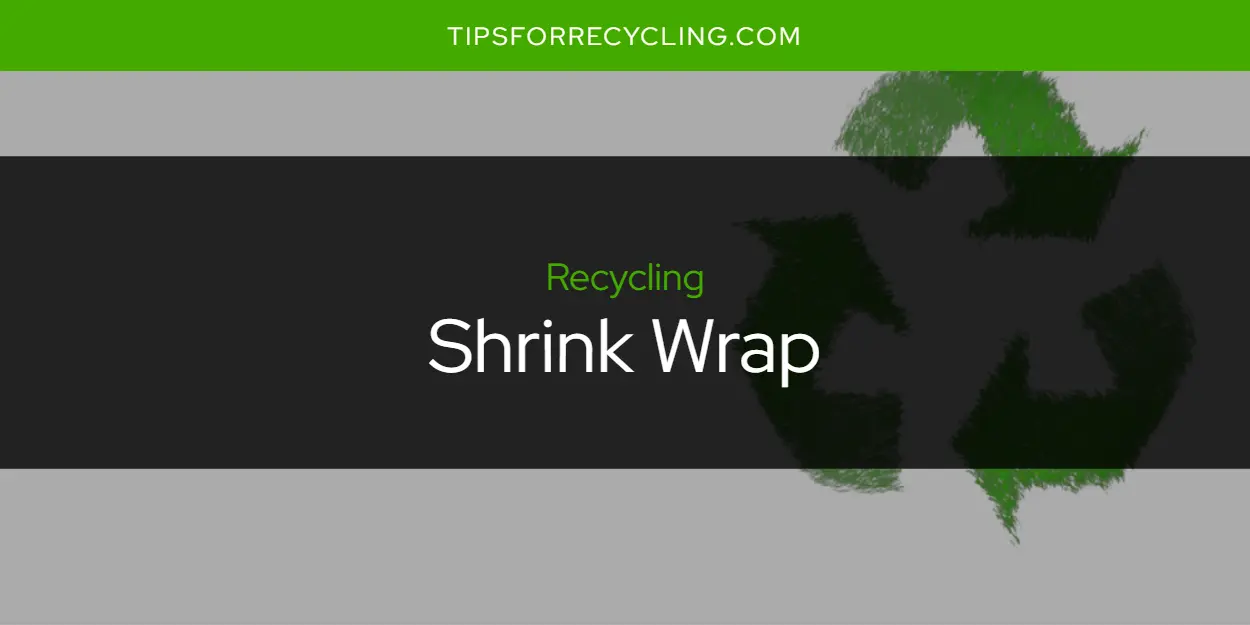Is Shrink Wrap Recyclable?

Shrink wrap is a type of plastic film made from low-density polyethylene (LDPE). It is used for wrapping products and securing them for transportation, storage and retail display. The question that many people ask is whether shrink wrap can be recycled or not.
See the below map for locations where you can recycle shrink wrap.
Yes, you can make money recycling shrink wraps. The exact amount depends on the type of material being recycled and the market conditions. Generally speaking, the more material you are able to collect and the higher quality it is, the more money you can expect to make.
Similarly, see if you can recycle shiny wrapping paper.
Recycling shrink wrap has many benefits compared to disposal. For starters, it reduces the amount of waste going into landfills as well as reducing greenhouse gas emissions due to less energy being used in manufacturing new plastic wrapping materials. Additionally, recycling plastic helps create a circular economy which reduces our dependency on oil-based materials like LDPE. However, there are some challenges involved with recycling shrink wraps such as how difficult it can be to separate certain types of plastics from each other and collecting enough material for cost effective processing.
Similarly, see if you can recycle saran wrap.
Yes, there is a growing market for recycled shrink wrap materials. Companies are now purchasing post-consumer shrink wrap products in order to use them in their own packaging products or as raw material inputs in new products such as garbage bags and pallet covers. This creates an opportunity for businesses to capitalize on recycling and selling post-consumer plastic films generated by their operations.
Similarly, see if you can recycle plastic wrap.
It's possible to recycle shrink wrap at home or at work by following a few simple steps. First, collect all your used shrink wraps into one area so that they are easily accessible when ready for collection or transport. Second, identify what type of film you have using an appropriate identification method such as an infrared analyzer device or refractometer test kit which will allow you to categorize your film according to its resin code number (i.e., 1-7). Finally, look for local collection programs near you which accept post-consumer shrink wrap materials so that you can drop off your materials for proper recycling and/or sale into a secondary market outlet such as those described above.
Similarly, see if you can recycle gift wrap.
When disposing or collecting used shrink wraps, some good practices include cleaning any excess dirt or debris off the material prior to collection/disposal; ensuring that all collected material is properly separated according to resin code numbers; clearly labeling any bags with identifying information such as date collected; compacting loose film pieces into larger rolls; maintaining clean collection areas where possible; minimizing contamination from other product packaging components; correctly disposing any hazardous waste separately; and contacting local authorities about safe disposal procedures when needed before taking these steps yourself .
Similarly, see if you can recycle washi tape.
Shrink wraps offer numerous advantages when it comes to protecting goods during transport but come with unique challenges when it comes time to dispose or recycle them properly. Knowing how best approach this process will not only help you meet legal requirements but also ensure that your business makes the most out of its waste management opportunities while helping conserve resources in the long run—a win-win scenario!